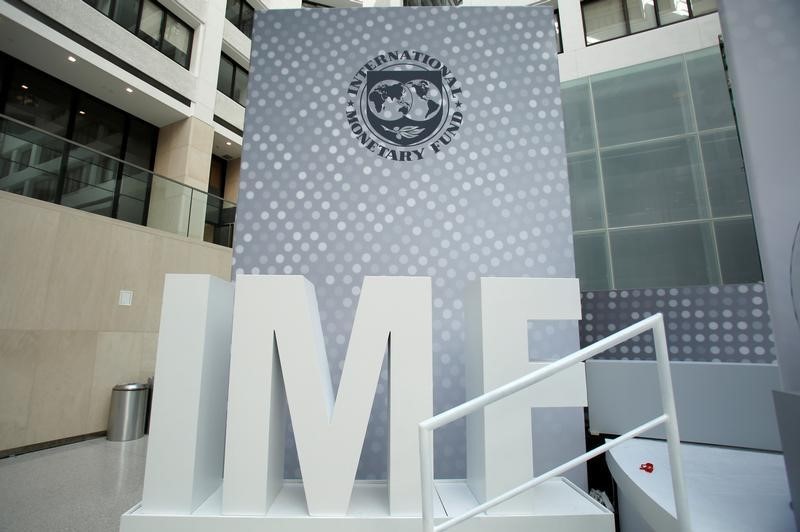Investing.com - Here’s a look at three things that were under the radar this past week.
1. IMF Rate Policy for ‘Inevitable’ Crisis
While rate watchers and currency traders were looking for any new inflection in the voice of Fed Chairman Jerome Powell, the International Monetary Fund laid out a game plan for battling a potential global downturn.
The plan would see central banks implement negative interest rates, given their currently low levels.
As fretting over still-unresolved trade tensions, particularly between the U.S. and China, continues, the IMF took preemptive action to enable monetary policymakers to combat an "inevitable" crisis.
The organization explained that many central banks reduced policy interest rates to zero during the global financial crisis to boost growth and noted that, ten years later, interest rates remain low in most countries.
“While the global economy has been recovering, future downturns are inevitable,” the IMF warned. “Crises have historically required interest rate cuts in the order of three to six percentage points but only three OECD countries - Turkey, Mexico and Iceland - have that kind of room to maneuver today.”
The IMF staff study intends to show how central banks can set up a system that would make deeply negative interest rates a feasible option and comes even as the Federal Reserve is struggling to convince markets that they could move forward from the current range of 2.25% to 2.5% with two more rate increases this year.
But markets are skeptical, placing a probability of only about 4% on one increase in December, compared to odds of nearly 12% for a cut by the end of the year, according to fed funds futures.
2. We Have Nothing to Fear, but …
The volatility index (VIX) quietly hit its lowest since level since October on Wednesday.
That made sense given the continued rally. Following the most recent downturn in December, the VIX has plunged more than 50%, while the S&P 500 has surged about 15%.
The Dow eked out its seventh weekly win Friday after clawing back nearly all its losses mere minutes before the close. But the geopolitical headlines that were so prevalent in December are reappearing and weighed on stocks this week.
While it may be too early to call a short-term bottom in the VIX, the argument is not without a merit. There's plenty of uncertainty to go around in the coming the weeks, which may not only send the fear index into overdrive, but limit risk appetite.
The threat of another U.S. government shutdown as early as next week looms. There's little evidence so far that Congress and the White House is closing in on a budget deal by Feb. 15.
The United States' trade dispute with the European Union over auto imports is expected to return to the spotlight. The Commerce Department's recommendations into whether to slap tariffs of up to 25% on imported cars and parts from the EU are due by Feb. 17.
On the geopolitical front, Brexit is a concern as the U.K. and European Union are at loggerheads over the Irish backstop issue. The Bank of England Governor Mark Carney warned earlier this week a no-deal Brexit could plunge the U.K. into a recession.
And global growth concerns remain front and center as Germany showed little sign that it'll avoid a second-consecutive quarter of negative growth, triggering a technical recession, after releasing a slew of dour economic data.
This uncertainty may not spark a vicious upward swing in VIX. But it does indicate a smooth path to swashbuckling gains in February faces a lot of potholes.
3. Will Walmart Be Forced Into India U-Turn?
Walmart Inc (NYSE:WMT) reports earnings in two weeks and there will be a strong examination of its e-commerce performance as usual.
But there should also be much more attention on its e-commerce business in India, which is facing an existential threat, according to a brokerage report out this week.
Walmart completed its $16 billion acquisition of Indian e-commerce giant Flipkart in August. But on Feb. 1, the Indian government implemented new regulations designed to help smaller Indian retailers in the face of competition from the likes of Flipkart and Amazon (NASDAQ:AMZN).
Among the new rules, which chiefly target the those big two, companies with direct foreign investment are banned from selling products online from vendors in which they have a stake. E-commerce companies can’t have more than 25% of their inventory from a single vendor and can’t have products exclusive to their online portals.
Morgan Stanley stressed how onerous this would be on Walmart in a research note this week.
"(A)n exit is likely, not completely out of the question, with the Indian ecommerce market becoming more complicated" Morgan Stanley (NYSE:MS) said, according to The Economic Times.
Morgan also said Flipkart may need to remove as much as 25% of its products from its site to comply.
"There is a precedent for an exit as Amazon retreated from China in late 2017 after seeing that the model no longer worked for them," it added.
But Walmart reaffirmed its commitment to the market this week.
“Walmart’s and Flipkart’s commitment to India is deep and long term,” Dirk Van den Berghe, Walmart regional CEO of Asian and Canada, told Indo-Asian News Service. “Despite the recent changes in regulations, we remain optimistic about the country.”
According to the brokerage, given the above, Flipkart may need to remove about 25% of its products from its site.
